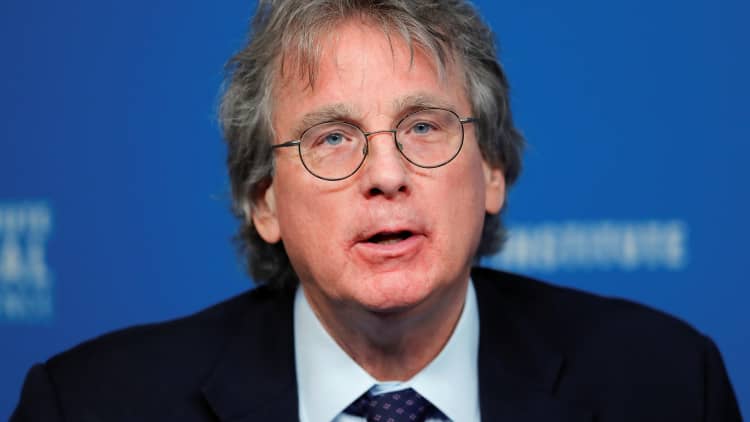Amid the recent good news about stronger-than-expected job growth in May, some economists have eyed one labor statistic with a sense of bewilderment.
Specifically, the share of people getting jobless benefits last month exceeded the share of unemployed workers.
On its face, that may seem impossible — how could there be more people collecting unemployment than there are actual unemployed people?
That had never previously occurred since the government began collecting data on the "insured unemployment rate" in the early 1970s.
Economists took to Twitter to express confusion over the anomaly after the Bureau of Labor Statistics released its most recent jobs report on June 5.
Jay Shambaugh, an economist at the Brookings Institution, called it "puzzling."
But the situation makes sense when accounting for an expansion of unemployment benefits provided by federal relief legislation and differences in how the statistics are determined, according to experts.
'Disconnect'
The unemployment rate — a ratio of the number of unemployed Americans to the total U.S. labor force — was 13.3% in May, according to the Bureau of Labor Statistics.
The insured unemployment rate — the number of people currently receiving unemployment insurance as a percentage of the labor force — averaged 15.2% last month, according to the Labor Department.

These rates typically rise and fall in lockstep with each other, with the official unemployment rate above the insured rate.
There are currently 21 million unemployed Americans but roughly 30 million Americans collecting unemployment benefits.
"Now there's a disconnect between those two numbers that didn't exist before," said Michael Farren, a research fellow at George Mason University.
More from Personal Finance:
Trump administration wants to replace $600 unemployment benefit
12 million people are at risk of not getting their stimulus check
The stock market can't sit still. Why you should
For one, the CARES Act, which was enacted in late March, loosened rules around who can collect unemployment benefits.
In normal times, workers must typically be looking for a new job in order to collect unemployment benefits.
But lawmakers suspended that requirement during the pandemic, when officials were trying to halt the spread of Covid-19 and broad sectors of the U.S. economy were shuttered.
However, the BLS only considers Americans to be unemployed if they've looked for work over the prior four weeks.
So, someone who hasn't been looking for work may be collecting unemployment benefits but not be considered as "unemployed."
6.3 million workers
The data suggests this may be the case for millions of workers.
About 6.3 million Americans dropped out of the labor force since February, according to the BLS.
Most of those workers were likely recently laid off but aren't looking for work, perhaps because they're discouraged by the bleak job market, afraid of contracting the coronavirus or need to take care of children who are home from school, economists said.
That would artificially decrease the official unemployment rate.
Further, nearly 5 million workers who were likely on temporary layoff (a furlough) in May were instead inadvertently labeled as being "absent from work," a category that includes workers on vacation, for example.
This error likely reduced the official unemployment rate by about 3 points, the BLS said.

The official unemployment rate would be around 19.5% when accounting for this misclassification and the number of people who dropped out of the labor force, Farren said.
In this case, historical relationship between unemployment benefits and the unemployment rate would have remained intact.
Additionally, the insured unemployment rate is based on state-level data.
The rate may be susceptible to error if, for example, some states lag in their reporting of who files for unemployment benefits or report that data inaccurately, according to Erica Groshen, a senior labor economics advisor at Cornell University and former commissioner of the Bureau of Labor Statistics commissioner from 2013 to 2017.
Conversely, the BLS determines the U.S. unemployment rate based on a different data source — a monthly survey of about 60,000 households.


